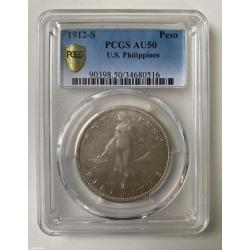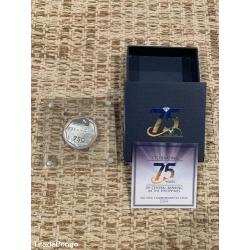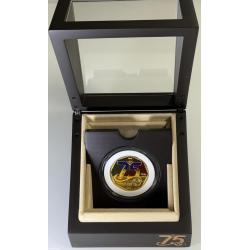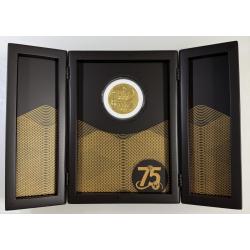WW2 US Philippine 5 Pesos ILOCOS NORTE Registered Emergency Treasury Certificate
Current Bid: $220.00 Bids: 0
- Time Left
 Deliver to: Columbus Ships in 24/48 hrs
Deliver to: Columbus Ships in 24/48 hrs Seller Info
- Seller
- kimkensarisaristore (0)
- Registered Since
- 08/04/2024 19:31:14
- Feedback
- n/a
- View Seller's Other Items
Bids History
Sales History
Shipping
- Item Location
- 1128, metro manila, Philippines
- Ships To
- Philippines
Postage Calculator
- Select Country
- Zip/Post Code
- Quantity
- Insurance
- Free
- Shipping Instructions
- after confirmation of payment
- Payment Methods
- PayPal
- Returns Accepted
- Yes
- Returns Policy
- 14 days
Description
WW2 US Philippine 5 Pesos ILOCOS NORTE Registered Emergency Treasury CertificateMay 4, 1942 (Fourth Series)
Registered and Countersigned. Red signature at the back.
Notes were mimeographed and handsigned by each Committee Member.
After printing, they were cut apart, folded, and glued together.
When two notes of the same denomination were printed on the same sheet,
differences occurred because of typing mistakes and alignment.Denomination is overprinted in purple. Fine condition. Scarce note
ILOCOS NORTE
The Japanese Kanno Detachment landed at Vigan, Ilocos Sur on December 10, 1941. Warned of advancing Japanese forces, Governor Roque B. Ablan hastily transferred the provincial government to Ma-an-anteng, a barrio of Solsona. Despite Treasury bereft of funds, his personal popularity was such that all officials and employees loyally remained at their spots.
In early March, Gov. Ablan radioed President Quezon requesting 100,000 pesos be dropped by plane. Quezon replied the next day and authorized Gov. Ablan to issue emergency notes for authorized expenditures.
On returning of Ilocos Norte Gov, Ablan called meeting of the Provincial Board on March 15, which adopted a Resolution creating a Currency Committee with authorization to print 500,000 pesos in emergency currency. President Quezon was notified of this, and in a reply radioed April 21, he not only gave his approval, but allotted an additional 50,000 pesos for a relief fund. Of the authorized amount, 519,865.55 pesos were actually printed and placed in circlulation.
The Currency Committee consisted of Gov. Ablan as a Chairman, with Provincial Treasurer Baldomero Perez and Provincial Auditor Roman O. Moreno as members.
Notes were mimeographed as that was the only form of printing available. The original issue was handsigned by each Committee Member. On subsequent issue signatures were printed along with the text. Notes were printed in sheets of two, with face and back for each taking ¼ sheets. After printing they were cut apart, folded and glued together. When two notes of the same denomination were printed on the same sheet, differences occurred because of typing mistakes and alignment. Some of these differences are of major importance (but are not differentiate in this listing); their existence will be as text varieties.
Each note had the denomination over printed in purple. There are variations. On centavo notes some had a zero between peso symbol and decimal point, others did not. The size of type used for the ovpt. also varied, and will be referred to as: Small ovpt. = 20mm. high; Large ovpt. =25mm. high
Specific amounts and denominations to be printed were authorized from time to time. Dates on the notes are dates of such authorization – delivery was later, in some cases much later. The last delivery was August 9, 1942 and even then was not complete. Printing was halted by Japanese military action.
Series refers only to subsequent authorization of a specific denomination. They were intended to be in sequence as were serial numbers. This did not work out too well in practice because of difficulties under which the notes were printed. For example: There were no 20 Centavos and 100 Pesos notes in the original authorization. When these were subsequently authorized the 20 Pesos was correctly inscribed First Series but the 100 Pesos was mistakenly inscribed Second Series and in the case of 5 Pesos notes, the Third Series was inadvertently omitted. As for serial numbers, there were several instances of duplication as well as skipped numbers. And the final delivery of 20 Centavo notes was accidentally omitted from the records, so quantity and serial numbers can only be estimated.
After the USAFFE surrender, the Japanese dropped leaflets urging Gov. Ablan to surrender, promising he could remain in office. This only strengthened Gov. Ablan’s determinations to fight on. The enraged Japanese sent large forces to destroy the free government and captured its leader. Realizing that Ilocos Norte emergency notes were a vital part of Gov. Ablan’s resistance, the note were outlawed, and torture and death were meted out to those found with them in their possession. Still the notes continued to circulate clandestinely.
Time after time the Japanese thought they had Gov. Ablan corned, but always be eluded them. On January 28, 1943 he barely escaped, and the Japanese boasted of capturing the “type writer” with which the notes were printed.
Gov. Ablan’s fate remains a mystery, despite substantial reward offered by the Commonwealth government in 1945 for any information concerning him.
On February 13, 1945 Loag was liberated by the guerilla 15th infantry, USAFIP-North Luzon. The next day a Military Provisional Government was organized. On of the first acts of this government was to authorize the circulation of Governor Ablan’s war notes. Because of counter feeling, the notes were called in for verification, after which they were stamped REGISTERED. Approximately 430,000 pesos were stamped. In June 1945 all notes were called in to be replaced by VICTORY currency. Redeemed notes were stamped PAID.
Counterfeits are easily identifiable as the typewriter used to cut the stencil did not have a symbol for peso, so the letter P was used, especially in the corner value tablets. Most counterfeits observe also have fake REGISTERED stampings.
Catalog values are for note which were REGISTERED. Notes which remain as originally issued, without stamping are valued considerably higher. Redeemed notes stamped PAID are valued at about half or less than the of listed values. (Source: Krause World Paper Money Catalogue )
May 4, 1942 (Fourth Series)
Registered and Countersigned. Red signature at the back.
Notes were mimeographed and handsigned by each Committee Member.
After printing, they were cut apart, folded, and glued together.
When two notes of the same denomination were printed on the same sheet,
differences occurred because of typing mistakes and alignment.Denomination is overprinted in purple. Fine condition. Scarce note
ILOCOS NORTE
The Japanese Kanno Detachment landed at Vigan, Ilocos Sur on December 10, 1941. Warned of advancing Japanese forces, Governor Roque B. Ablan hastily transferred the provincial government to Ma-an-anteng, a barrio of Solsona. Despite Treasury bereft of funds, his personal popularity was such that all officials and employees loyally remained at their spots.
In early March, Gov. Ablan radioed President Quezon requesting 100,000 pesos be dropped by plane. Quezon replied the next day and authorized Gov. Ablan to issue emergency notes for authorized expenditures.
On returning of Ilocos Norte Gov, Ablan called meeting of the Provincial Board on March 15, which adopted a Resolution creating a Currency Committee with authorization to print 500,000 pesos in emergency currency. President Quezon was notified of this, and in a reply radioed April 21, he not only gave his approval, but allotted an additional 50,000 pesos for a relief fund. Of the authorized amount, 519,865.55 pesos were actually printed and placed in circlulation.
The Currency Committee consisted of Gov. Ablan as a Chairman, with Provincial Treasurer Baldomero Perez and Provincial Auditor Roman O. Moreno as members.
Notes were mimeographed as that was the only form of printing available. The original issue was handsigned by each Committee Member. On subsequent issue signatures were printed along with the text. Notes were printed in sheets of two, with face and back for each taking ¼ sheets. After printing they were cut apart, folded and glued together. When two notes of the same denomination were printed on the same sheet, differences occurred because of typing mistakes and alignment. Some of these differences are of major importance (but are not differentiate in this listing); their existence will be as text varieties.
Each note had the denomination over printed in purple. There are variations. On centavo notes some had a zero between peso symbol and decimal point, others did not. The size of type used for the ovpt. also varied, and will be referred to as: Small ovpt. = 20mm. high; Large ovpt. =25mm. high
Specific amounts and denominations to be printed were authorized from time to time. Dates on the notes are dates of such authorization – delivery was later, in some cases much later. The last delivery was August 9, 1942 and even then was not complete. Printing was halted by Japanese military action.
Series refers only to subsequent authorization of a specific denomination. They were intended to be in sequence as were serial numbers. This did not work out too well in practice because of difficulties under which the notes were printed. For example: There were no 20 Centavos and 100 Pesos notes in the original authorization. When these were subsequently authorized the 20 Pesos was correctly inscribed First Series but the 100 Pesos was mistakenly inscribed Second Series and in the case of 5 Pesos notes, the Third Series was inadvertently omitted. As for serial numbers, there were several instances of duplication as well as skipped numbers. And the final delivery of 20 Centavo notes was accidentally omitted from the records, so quantity and serial numbers can only be estimated.
After the USAFFE surrender, the Japanese dropped leaflets urging Gov. Ablan to surrender, promising he could remain in office. This only strengthened Gov. Ablan’s determinations to fight on. The enraged Japanese sent large forces to destroy the free government and captured its leader. Realizing that Ilocos Norte emergency notes were a vital part of Gov. Ablan’s resistance, the note were outlawed, and torture and death were meted out to those found with them in their possession. Still the notes continued to circulate clandestinely.
Time after time the Japanese thought they had Gov. Ablan corned, but always be eluded them. On January 28, 1943 he barely escaped, and the Japanese boasted of capturing the “type writer” with which the notes were printed.
Gov. Ablan’s fate remains a mystery, despite substantial reward offered by the Commonwealth government in 1945 for any information concerning him.
On February 13, 1945 Loag was liberated by the guerilla 15th infantry, USAFIP-North Luzon. The next day a Military Provisional Government was organized. On of the first acts of this government was to authorize the circulation of Governor Ablan’s war notes. Because of counter feeling, the notes were called in for verification, after which they were stamped REGISTERED. Approximately 430,000 pesos were stamped. In June 1945 all notes were called in to be replaced by VICTORY currency. Redeemed notes were stamped PAID.
Counterfeits are easily identifiable as the typewriter used to cut the stencil did not have a symbol for peso, so the letter P was used, especially in the corner value tablets. Most counterfeits observe also have fake REGISTERED stampings.
Catalog values are for note which were REGISTERED. Notes which remain as originally issued, without stamping are valued considerably higher. Redeemed notes stamped PAID are valued at about half or less than the of listed values. (Source: Krause World Paper Money Catalogue )
Specifications
- Circulated/Uncirculated
- Circulated
- Condition
- Used
Public Questions
Click here to login

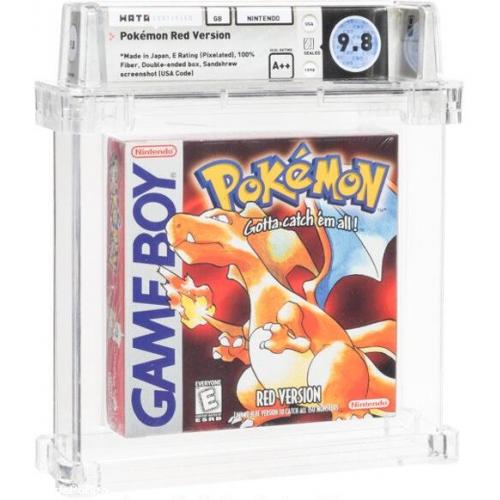
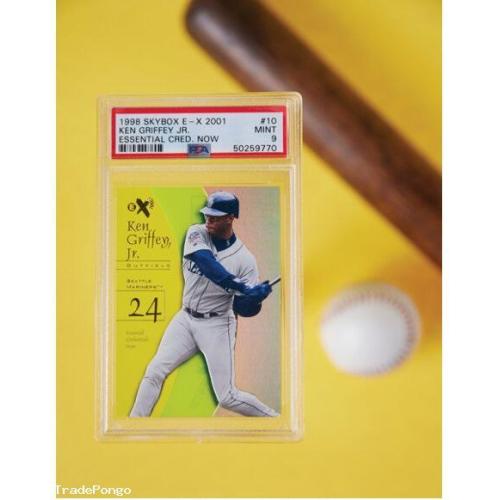




 Have one to sell?
Have one to sell? 



